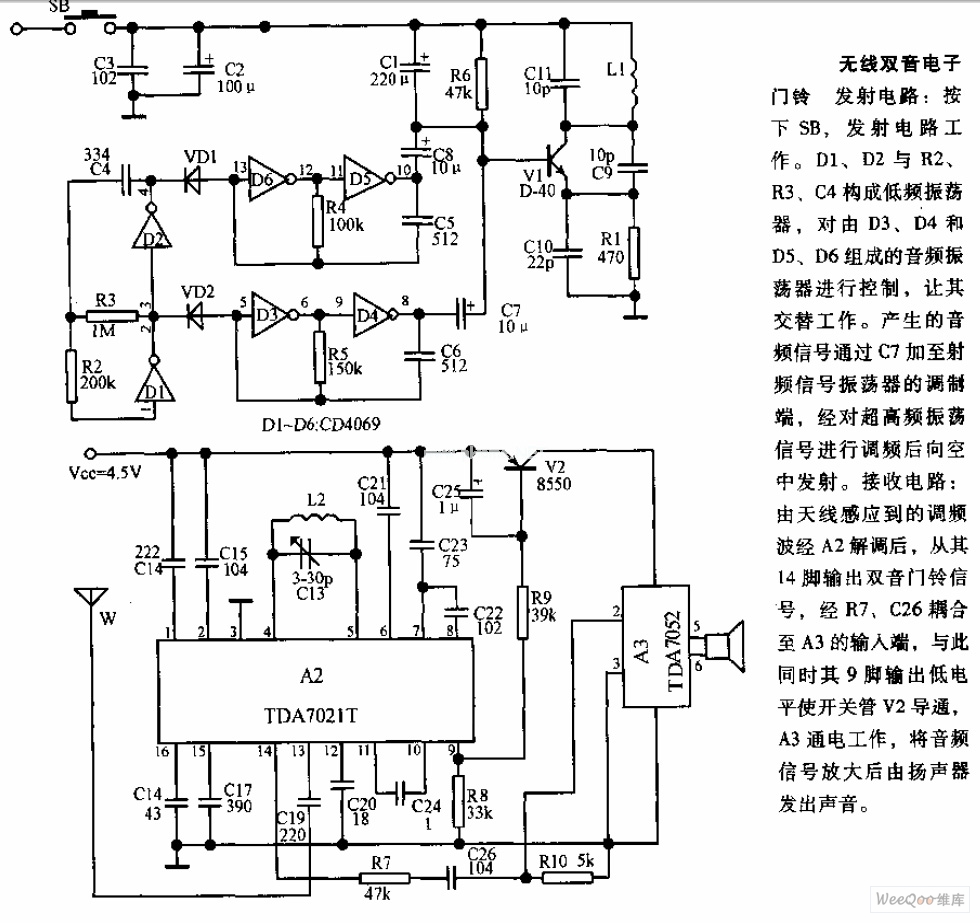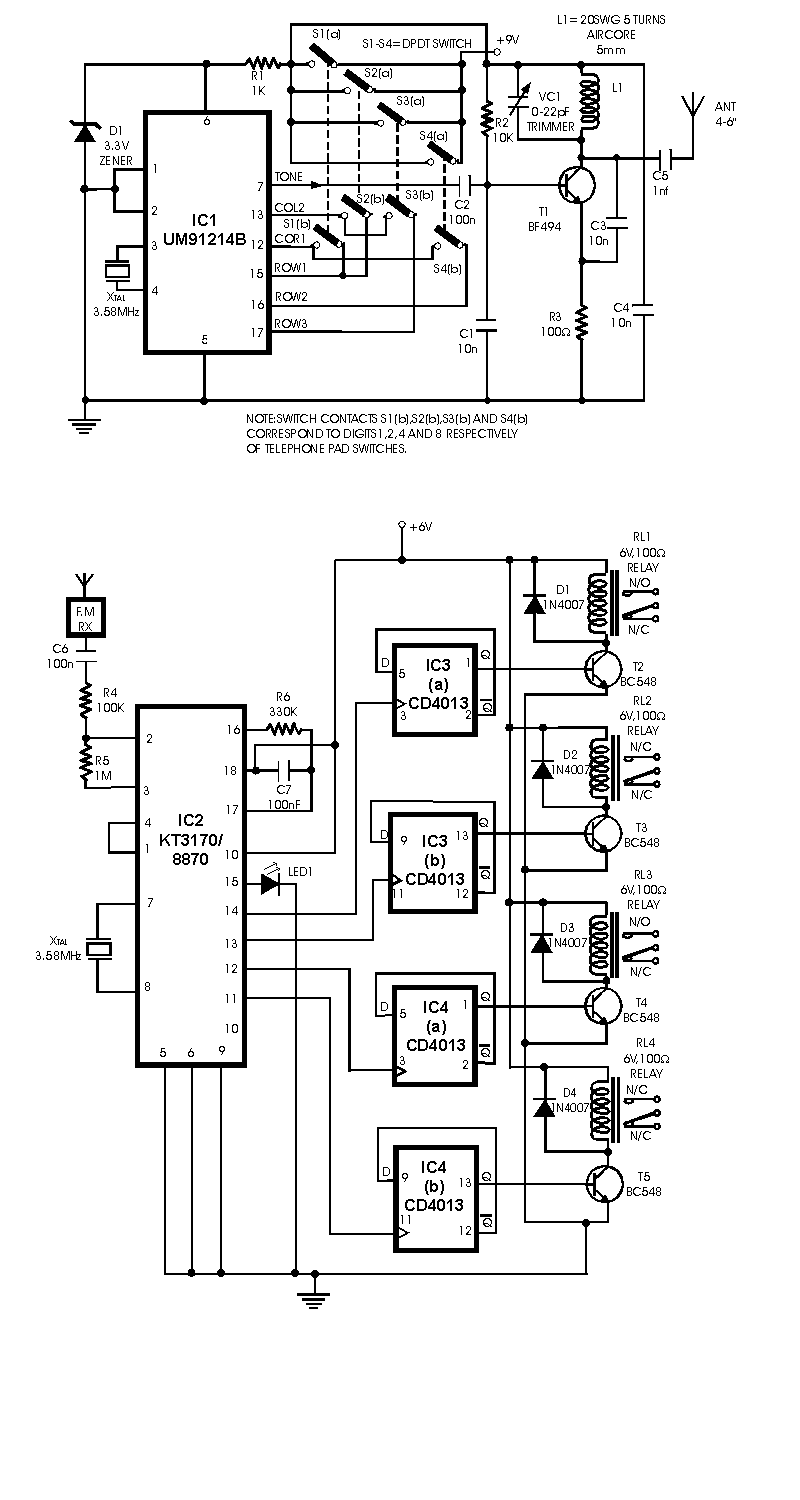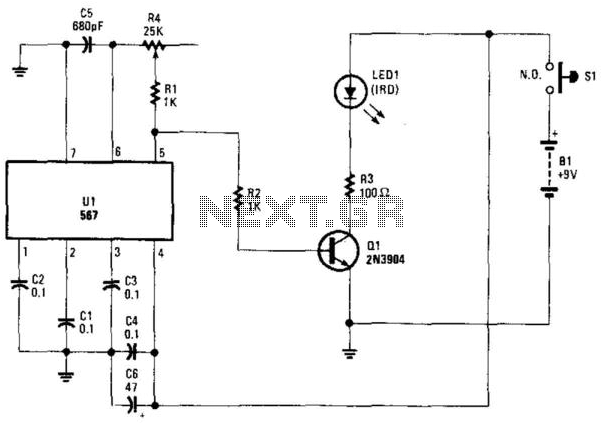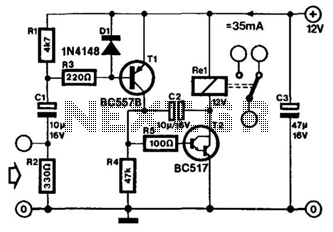
Simple FM Transmitter Circuit (88-108MHz) With 2N2222 Transistor
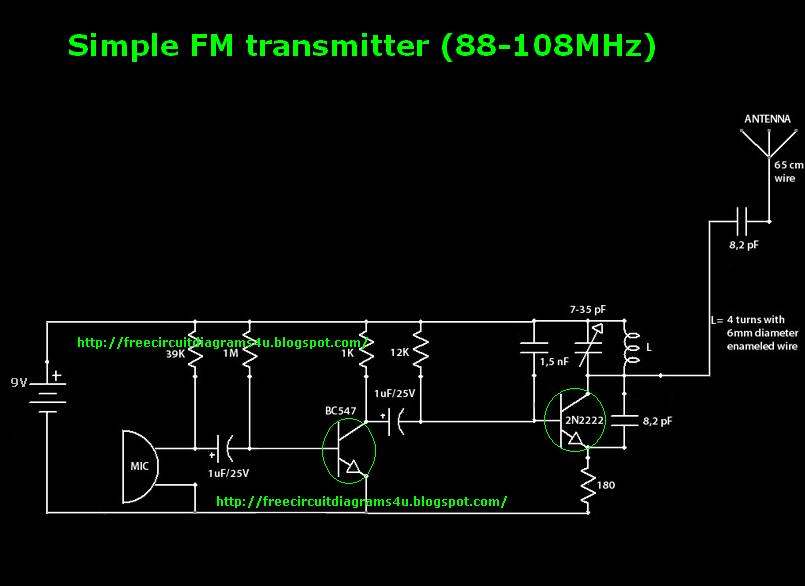
This is a simple transmitter circuit diagram that offers decent coverage. The circuit can operate with a power supply of 9-12V. To tune this circuit...
This simple transmitter circuit is designed to provide reliable performance within the specified voltage range. It typically consists of key components such as a transistor, an oscillator circuit, and an antenna. The circuit is powered by a DC power supply ranging from 9 to 12 volts, making it suitable for various applications where moderate transmission distances are required.
The core of the transmitter is often based on a common emitter or common base configuration, utilizing a bipolar junction transistor (BJT) or a field-effect transistor (FET) to amplify the radio frequency (RF) signal generated by the oscillator. The oscillator may be constructed using a combination of resistors, capacitors, and inductors to establish the desired frequency of operation. The frequency can be adjusted by varying the capacitance or inductance in the circuit, allowing for tuning to specific channels or frequencies.
The antenna connected to the transmitter is crucial for effective signal transmission. Depending on the application, different types of antennas can be used, such as dipole, monopole, or loop antennas, each offering varying characteristics in terms of gain and radiation pattern.
To ensure optimal performance, the circuit should be designed with attention to component selection, layout, and grounding techniques to minimize interference and enhance signal clarity. Proper shielding may also be employed to protect the circuit from external noise sources, thereby improving the overall transmission quality.
In summary, this simple transmitter circuit diagram serves as a foundational design for various RF transmission applications, providing essential features such as tunability and decent coverage, while operating efficiently within the specified voltage range.This is simple transmitter circuit diagram which has some what good coverage. This circuit can be operated with 9-12V power supply. To tune this .. 🔗 External reference
This simple transmitter circuit is designed to provide reliable performance within the specified voltage range. It typically consists of key components such as a transistor, an oscillator circuit, and an antenna. The circuit is powered by a DC power supply ranging from 9 to 12 volts, making it suitable for various applications where moderate transmission distances are required.
The core of the transmitter is often based on a common emitter or common base configuration, utilizing a bipolar junction transistor (BJT) or a field-effect transistor (FET) to amplify the radio frequency (RF) signal generated by the oscillator. The oscillator may be constructed using a combination of resistors, capacitors, and inductors to establish the desired frequency of operation. The frequency can be adjusted by varying the capacitance or inductance in the circuit, allowing for tuning to specific channels or frequencies.
The antenna connected to the transmitter is crucial for effective signal transmission. Depending on the application, different types of antennas can be used, such as dipole, monopole, or loop antennas, each offering varying characteristics in terms of gain and radiation pattern.
To ensure optimal performance, the circuit should be designed with attention to component selection, layout, and grounding techniques to minimize interference and enhance signal clarity. Proper shielding may also be employed to protect the circuit from external noise sources, thereby improving the overall transmission quality.
In summary, this simple transmitter circuit diagram serves as a foundational design for various RF transmission applications, providing essential features such as tunability and decent coverage, while operating efficiently within the specified voltage range.This is simple transmitter circuit diagram which has some what good coverage. This circuit can be operated with 9-12V power supply. To tune this .. 🔗 External reference
